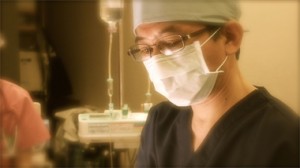
昭和62年北里大学医学部卒業。形成外科、一般外科、整形外科、麻酔科、救命救急科等広い分野の診療を手がける。平成9年北里研究所病院形成美容外科医長、茅ヶ崎徳洲会総合病院形成外科・美容外科部長を歴任。平成10年4月より銀座美容外科副院長として父子で美容外科診療に携わる。
平成20年4月より銀座・いけだクリニックの顧問医師に就任。
<資格・免許>
- 医学博士
- 日本形成外科学会認定専門医
- 日本美容外科学会専門医
- 世界美容外科学会正会員
- 日本美容医療協会正会員
- 平成20年4月銀座いけだクリニック顧問医師に就任













zithromax purchase online: can you buy zithromax over the counter in canada – zithromax 250 mg australia
Hey There. I found your blog using msn. This is an extremely well written article.
I’ll make sure to bookmark it and return to read more of your useful info.
Thanks for the post. I’ll certainly return.
I think this is among the most vital info for me.
And i’m glad reading your article. But wanna remark on some general things, The site style is ideal, the articles is really excellent : D.
Good job, cheers
Possibilities
The authors of the study, published May 6 in the journal Monthly Notices of the Royal Astronomical Society, specifically set out to search for Dyson spheres, in the form of infrared heat near stars that couldn’t be explained in any other way.
kraken официальный сайт
Using historical data from telescopes that pick up infrared signatures, the research team looked at stars located within less than 1,000 light-years from Earth: “We started with a sample of 5 million stars, and we applied filters to try to get rid of as much data contamination as possible,” said lead study author Matias Suazo, a doctoral student in the department of physics and astronomy of Uppsala University in Sweden.
“So far, we have seven sources that we know are glowing in the infrared but we don’t know why, so they stand out.”
https://kra30att.cc
кракен
There is no conclusive evidence that the seven stars have Dyson spheres around them, Suazo cautioned.
“It’s difficult for us to find an explanation for these sources, because we don’t have enough data to prove what is the real cause of the infrared glow,” he said. “They could be Dyson spheres, because they behave like our models predict, but they could be something else as well.”
Among the natural causes that could explain the infrared glow are an unlucky alignment in the observation, with a galaxy in the background overlapping with the star, planetary collisions creating debris, or the fact that the stars may be young and therefore still surrounded by disks of hot debris from which planets would later form.
The data used by the researchers comes from two active space telescopes — the Wide-field Infrared Survey Explorer, or WISE, from NASA and Gaia from the European Space Agency — as well as an astronomical survey of the sky in infrared light called The Two Micron All Sky Survey. Also known as 2MASS, the collaboration between the University of Massachusetts and the US space agency’s Jet Propulsion Laboratory took place between 1997 and 2001.
What’s up mates, how is all, and what you wish
for to say regarding this post, in my view its really remarkable designed for me.